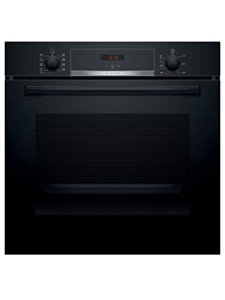This Story Behind Kitchen With Built In Oven Will Haunt You For The Rest Of Your Life!
The Benefits and Design Considerations of a Kitchen with a Built-In Oven
In modern kitchen design, built-in ovens have become a popular function, using both performance and visual appeals that cater to contemporary lifestyles. This article looks into the benefits of incorporating a built-in oven into the kitchen area and highlights essential style considerations to make sure a cohesive and useful kitchen environment.
Understanding Built-In Ovens
Built-in ovens are designed to be seamlessly integrated into kitchen cabinetry, which distinguishes them from traditional freestanding ovens. Electric built in oven and hob packages come in different setups, consisting of single-wall ovens, double-wall ovens, and even microwave ovens that share the very same integrated cabinet space.
Typical Types of Built-In Ovens
Type
Description
Ideal Use
Single Wall Oven
A basic oven with one compartment for baking and roasting.
Little kitchens or everyday baking.
Double Wall Oven
Two different oven compartments permitting simultaneous cooking.
Large families or regular bakers.
Combination Oven
A microwave and traditional oven in one unit.
Quick meals and versatile cooking alternatives.
Steam Oven
An oven created particularly for steam cooking.
Health-focused cooking and complex dishes.
Benefits of Built-In Ovens
The appeal of built-in ovens can be credited to numerous essential advantages, including:
1. Area Efficiency
Built-in ovens are developed to fit within existing kitchen cabinetry, releasing up important flooring space. This function is especially advantageous in smaller sized kitchens, where every square foot counts.
2. Streamlined Appearance
The smooth combination of a built-in oven produces a sleek look in the kitchen. Offered in numerous finishes, built-in ovens can match or complement cabinets, offering a modern-day and unified style aesthetic.
3. Boosted Functionality
Built-in ovens often use sophisticated functions, such as clever innovation, several cooking modes, and even self-cleaning alternatives. This can enhance cooking experiences and improve the effectiveness of meal preparation.
4. Improved Accessibility
With correct setup of a built-in oven, users can increase accessibility, preventing the need to flex over to reach a lower oven compartment. built under double oven and hob packages -level cooking appliances allow cooks to monitor their meals quickly and minimize the danger of burns from flexing down to look at a baking item.
5. Energy Efficiency
Lots of modern-day built-in ovens use advanced cooking innovation that can cause lower energy usage. Features like convection cooking can decrease cooking times while ensuring even heating, eventually saving energy.
Design Considerations for a Kitchen with Built-In Ovens
While built-in ovens use numerous advantages, careful consideration in the design stage is important to maximize their advantages and incorporate them efficiently into the kitchen layout. Here are some crucial aspects to consider:
1. Cabinet Configuration
When preparing for a built-in oven, property owners should thoroughly think about cabinet layouts and configurations. Appropriate ventilation is important for proper operation. It's vital to leave enough space for air flow, which can vary depending on the oven design.
2. Height Preference
The installation height of the oven must be determined based on the main users. A built-in oven located at eye level can make it easier to utilize, especially for those who regularly prepare.
3. Complementary Appliances
In a kitchen setting, built-in ovens often match other built-in appliances such as microwave ovens and warming drawers. Choosing appliances that work well together can further streamline the kitchen's style.
4. Aesthetic Choices
Selecting finishes and colors that balance with the overall kitchen style is essential. Built-in ovens are available in different alternatives, including stainless-steel, black, and even custom-made cabinet finishes that can disappear seamlessly into the cabinets.
5. Budget Considerations
Built-in ovens can range considerably in rate, from affordable alternatives to high-end designs filled with functions. It's vital to set a reasonable spending plan that enables the desired requirements without compromising the total kitchen restoration.
Frequently asked questions
1. What is the difference in between a built-in oven and a freestanding oven?
Built-in ovens are integrated into kitchen cabinetry and offer a seamless appearance, while freestanding ovens are standalone systems that can be moved quickly.
2. Do built-in ovens need expert setup?
Yes, built-in ovens generally need professional setup due to their integration with cabinets and electrical requirements.
3. Are built-in ovens more costly than conventional ovens?
In basic, built-in ovens can be more costly due to their installation process and advanced functions, however there are numerous choices available to suit differing budgets.
4. How do I keep a built-in oven?
Routine cleansing and maintenance, such as using the self-clean function, inspecting seals, and guaranteeing appropriate ventilation, are necessary for preserving a built-in oven.
5. Can built-in ovens be utilized in smaller sized cooking areas?
Yes, built-in ovens can be useful in smaller cooking areas due to the fact that they optimize area efficiency and can be installed at eye level for convenience.
Integrating a built-in oven into a kitchen style is an exceptional choice for boosting performance and aesthetic appeals. By thinking about the style pointers and benefits discussed in this post, homeowners can develop an unified kitchen space that caters to their cooking needs while looking stylish and stylish. Whether renovating an existing kitchen or developing a brand-new one, built-in ovens offer a level of sophistication and practicality that aligns seamlessly with modern-day culinary practices.
